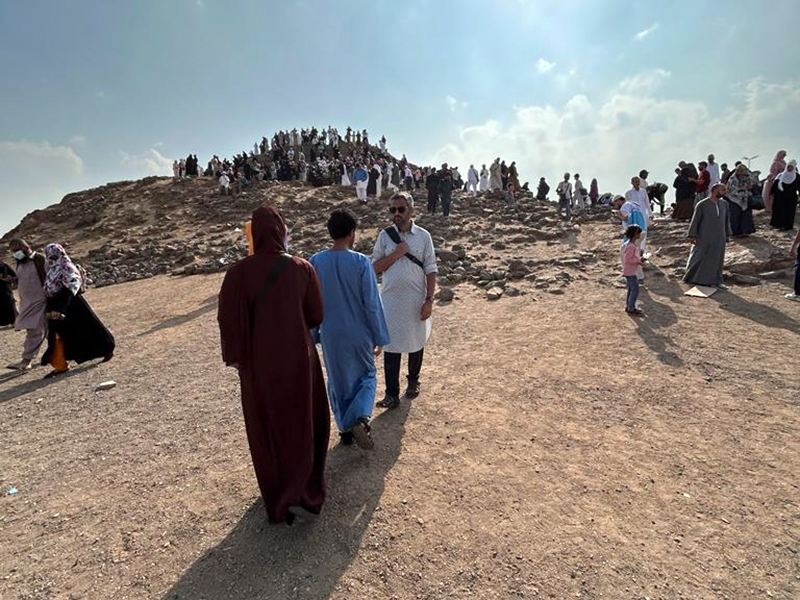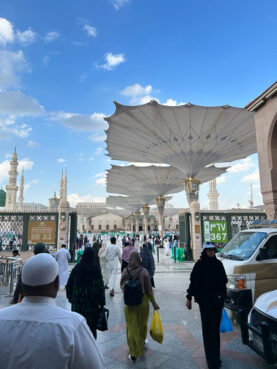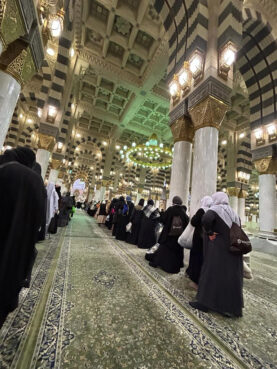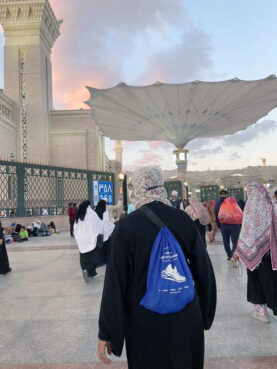(RNS) — Muslims are taught that when they make the Hajj pilgrimage to Mecca for the first time and see the Kaaba, Allah’s house on earth, whatever prayer they make that day will be answered. The advice you’ll often get is to pray that all your pilgrimage prayers be granted — a sort of “cover your bases for maximum prayer success” technique.
When my husband and I went on pilgrimage nearly 20 years ago, leaving our 18-month-old daughter and 4-year-old, newly diagnosed autistic son in the care of their paternal grandparents, I didn’t follow that advice. I made a very personal, wrenching prayer that only mothers who find themselves in my shoes are wont to make.
That prayer has never been answered, at least not in the way I imagined. In December, I returned to Medina and Mecca with my husband and two of our now three children (again leaving our autistic son at home), making the slimmed-down pilgrimage called Umrah, I realized that it’s taken me nearly two painful, challenging and difficult decades to begin to understand how that prayer made 19 years ago is manifesting.
We were four of some 13.5 million Muslims who performed the Umrah pilgrimage in 2023, according to Saudi Arabia’s minister of Hajj and Umrah, Tawfiq al-Rabiah, the “highest number of international pilgrims to have ever performed the ritual.” For my family, it was the culmination a yearslong plan to take our children on a faith-oriented journey to the three most important mosques for Muslims: Al-Aqsa in Jerusalem (read about that portion of our journey here), Masjid Nabawi in Medina and Masjid Haram in Mecca.
- The green dome of Masjid Nabawi viewed through the dhikr beads that were gifted to the Ali family in the Old City in Jerusalem. (Photo by Dilshad Ali)
- Walking into the vast courtyard area of Masjid Nabawi right after arriving in Medina. (Photo by Dilshad Ali)
Medina isn’t a required part of an Umrah pilgrimage, but we took advantage of our children’s college and high school winter break to spend a few days in the city where the Prophet Muhammad fled from Mecca and established the first Muslim community, and where he is buried.
Our plan was to fly from Jerusalem to Jeddah and catch Jumah (Friday) prayer in Medina, before going on to Mecca for the next Jumah prayer the following week. But whatever we plan, God plans best: Due to a flight delay and hotel issues in Jeddah, it was well past Friday prayer time when we finally reached Medina, despite taking a high-speed train — a fantastic convenience that didn’t exist when we performed our Hajj.
So for our first 48 hours in Medina we maximized our worship time at the Masjid Nabawi and visited other important historical mosques, such as Masjid Uhud, built at the place where the early believers of Islam fought those who sought to tamp out the religion before it could grow. We prayed at Masjid Quba, whose foundation was laid by Muhammad and where, Muslims are taught, praying is the equivalent of performing an Umrah.
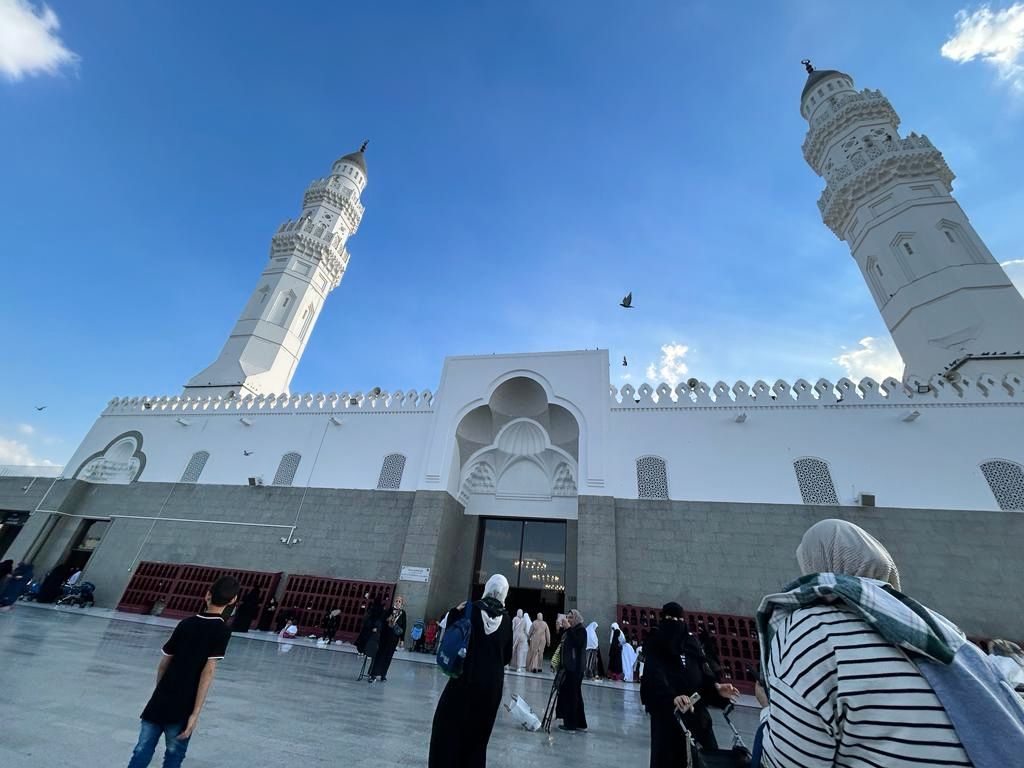
Masjid Qiblatain is where Muslims believe Muhammad received a revelation from the Angel Jibreel (Gabriel) to change the direction Muslims face when they pray from Jerusalem to Mecca. (Photo by Dilshad Ali)
We also prayed in Masjid Qiblatain, where Muslims believe Muhammad received a revelation from the Angel Jibreel (Gabriel) to change the direction Muslims face when they pray from Jerusalem to Mecca, as they do today. It’s one of the few mosques in the world with two mihrabs — niches that indicate the direction of prayer, one in the east for Mecca and one in the west for Jerusalem.
But our best times in Medina were spent in the Prophet’s mosque. There is a near-unanimous description among Muslims regarding Masjid Nabawi, that it is a place of immense peace. While worshippers crowd its expansive surrounding courtyard and fill seemingly every inch of the mosque area at prayer times, the heart feels at ease here, the coolness washing over inner turmoil and strife.
In our first full day in Medina, I informed my family I was waking an hour before Fajr (the pre-dawn prayer) time so I could pray tahajjud, a nafl or voluntary prayer Muslims can do in the last part of the night before Fajr-time, and they were welcome to join me. But at the appointed time, I ended up going alone. I laid my prayer mat next to two teachers escorting a group of nearly 60 high school students from the Chicago-based Universal School on a winter-break Umrah trip.
- Muslims from all over the world walk on the grounds of the Masjid Qiblatain in Medina, Saudi Arabia. (Photo by Dilshad Ali)
- Amal Ali praying Asr in the courtyard of Masjid Nabawi on the first day there. (Photo by Dilshad Ali)
How much of a spiritual impact does Umrah have on teenagers, I asked, thinking about my own young-adult children. “They are teenagers, so not all of them will be intensely spiritual or feel everything deeply,” they told me. “But at the same time, especially after the past couple of years of pandemic and isolation, they also crave connection. Kids want to feel something. They feel the world blowing up around them, and they want to feel at peace with whatever God’s plan is. So yeah, they are definitely enjoying this.”
The same could be said of my own kids. Of the four of us, my daughter, Amal, was on a mission to give all of herself to God and worship and let it heal her soul of every struggle she had been enduring. My son was soaking up the experience in his own way but wasn’t as emotionally impacted as his sister. Reflecting on the trip later, his sister spoke about how freely her tears flowed.
“Yeah, I didn’t cry,” Hamza told me. “I kind of wished I did.” I assured him that everyone experiences Umrah in their own way, and that tears aren’t everyone’s marker of a meaningful experience.
- Dilshad Ali and daughter Amal stood in line for hours after praying Fajr (before dawn) before finally get inside Masjid Nabawi to make their appointed time to worship in Rawdah. (Photo by Dilshad Ali)
- Dilshad Ali was determined to represent her autistic son in Medina, so she carried her sandals in a string backpack from the annual Autism Society of Central Virginia 5K that the family has been involved with for more than a decade. (Photo courtesy of Dilshad Ali)
On our second full day in Medina, it came our time to visit Rawdah, an area of Masjid Nabawi near the home of Aisha, Muhammad’s wife, where the Prophet’s grave and his pulpit are situated, which (according to hadith) is believed to be a garden of Paradise on earth.
Modern technology dictates when and if you can visit Rawdah for worship. You apply for a time slot through Saudi’s Nusuk app, which is often booked. My daughter and I managed to snag post-Fajr time slots after consulting with a group of Whatsapp friends.
After working our way through confusing lines and following instructions shouted in Arabic by the female caretakers of the mosque, we made our way into the area of the mosque that is Rawdah. I tried to explain to Amal how to worship in the brief time we had and how it would be immensely crowded. I tried to convey to her to use that time to absorb the essence of the Prophet of Islam and pray for her heart’s desire.

After baring our souls in Rawdah, my daughter and I emerged. She refused a selfie. I wanted to capture my post-Rawdah emotions. (Photo by Dilshad Ali)
We emerged from Rawdah in a daze of contented peace into the early morning daylight, peeking through the picturesque giant umbrellas that cover the mosque’s courtyard. Then, as we returned to our hotel for a brief rest, I encountered a problem I had been hoping to avoid, a problem all women dread when coming for Umrah: the start of my monthly cycle.
A word on this: A Muslim woman’s period precludes her from fasting (which she must make up later), praying (which she doesn’t have to make up) and from performing the rites of Umrah or Hajj (among other things). Women the world over are schooled in what medicines they can take to stop their cycle and allow them to complete their pilgrimage. This is tricky for me, however, due to a preexisting medical condition. I did what I could, the details of which will remain private.
Though I planned, God was the best of planners, and I was sidelined with six days to go to complete our Umrah.
“I am content,” I told my husband and kids. “We’ve worshipped at Al-Aqsa, Masjid Nabawi and so many other holy mosques. And there’s a chance I could catch Umrah on our last day in Mecca. I am content.”
I figured if I said it enough times, I would feel it.
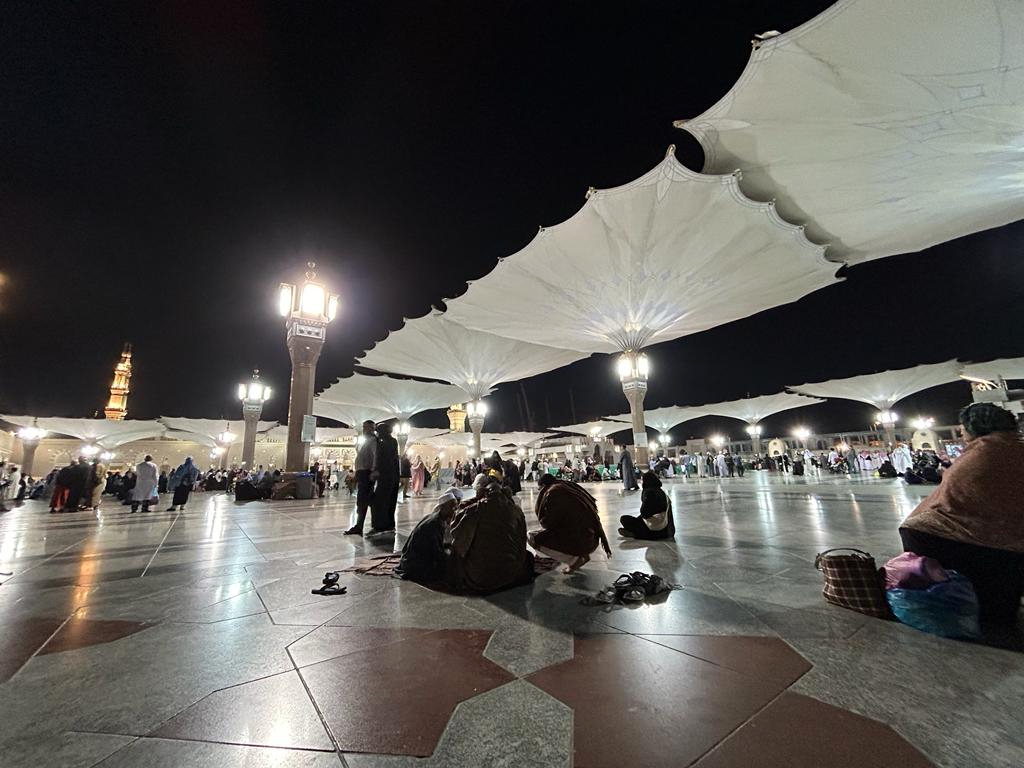
The night before leaving Medina, Dilshad Ali went to Masjid Nabawi by herself to hand out candy to those worshipping there and sit and pray. (Photo by Dilshad Ali)
(Dilshad D. Ali is a freelance journalist. The views expressed in this commentary do not necessarily reflect those of Religion News Service.)
